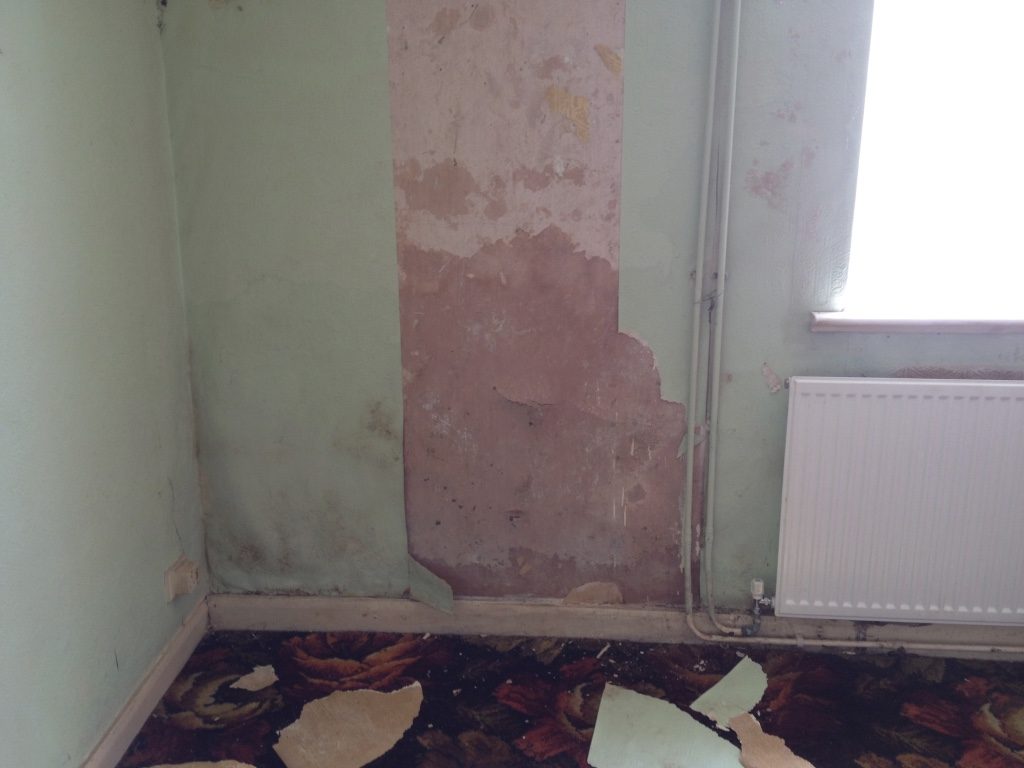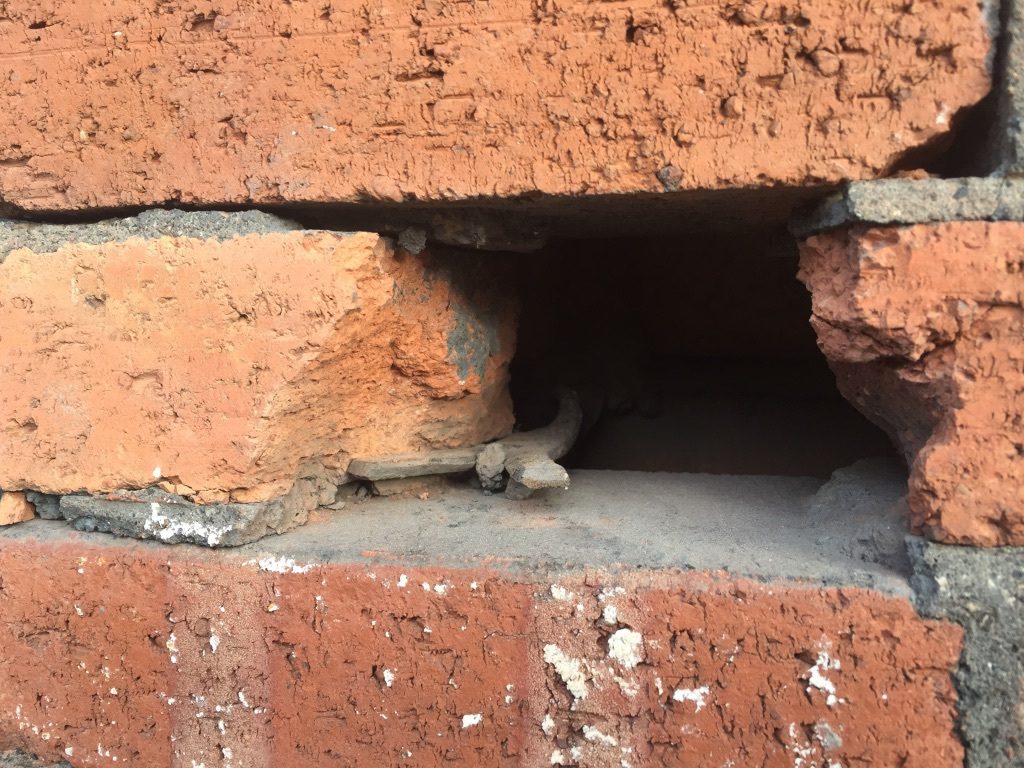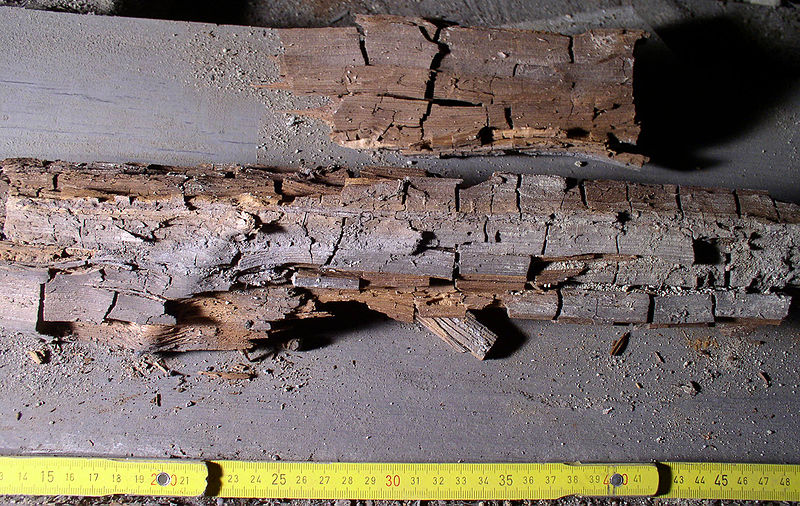
Break down of the Damp Proof Course and related problems.
Dampness in cavity walls can be due to the breakdown of the DPC and issues within the cavity.
Cavity walls became more popular in the 1920s. Walls were built predominantly of 2 skins of brickwork with a cavity between of about 50mm (2 inches). The two skins were and still are constructed using wall ties – metal bars of varying shape in the day!

Checks and attention to ensure that the ties were cleaned as the wall progressed were not as they are today. As the wall was built mortar would drop into the cavity and land on a tie, a build-up mortar would effectively ‘bridge’ the cavity and water would track across, giving rise to damp patches over the wall.
In addition, to make matters worse, in the 80’s the first round of thermal efficiency measures began and by filling the cavity with what was perceived water resistance material helped the water collect on the ties.
Later these ties would start to corrode, expand and start cracking the wall letting more water in. Keep an eye out for my blog on Wall Tie Failure.
Dry Rot also known as Surpula Lacrymans is a wood-destroying fungus that is present in timber that is damp and it is able to travel through the other building materials to breakout and spread quickly.

The timber may have become damp due to the issue mentioned above or due to leaks from within the property. For example, leaking shower trays, defective wall tiling which allows water from over bath showers to run down and under the bath, bath or shower traps leaking. Many of which you will be oblivious to until you start opening things up. Timber that has been affected will have shrunk and darkened and a fruiting body will appear which look like small pancakes with wide pores. You will also see a grey to light brown skin that can be peeled like a mushroom and cotton wool-like growth.
Dry rot can cause major structural damage and it is recommended that this is treated by a specialist who will require all the affected area to be exposed and if you are doing the work yourself or have a builder on board, you will need to remove all of the timber that has been affected as timbers buried into a wall or that are uptight against a wall will not be able to be treated, so need to be removed.
Why not check out the new edition of my book with some great real-life case studies?
Get your copy here http://www.propertyexpertpartnership.com/book
Watch out for my upcoming events on all things property. A great chance to ask your questions and network!
Thanks for reading!
Mike Woods MCIAT








